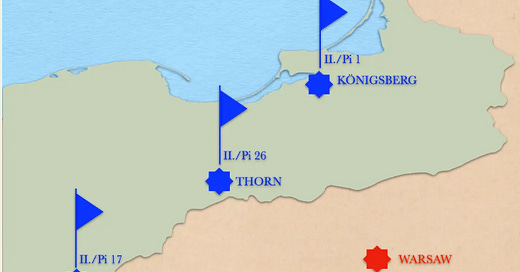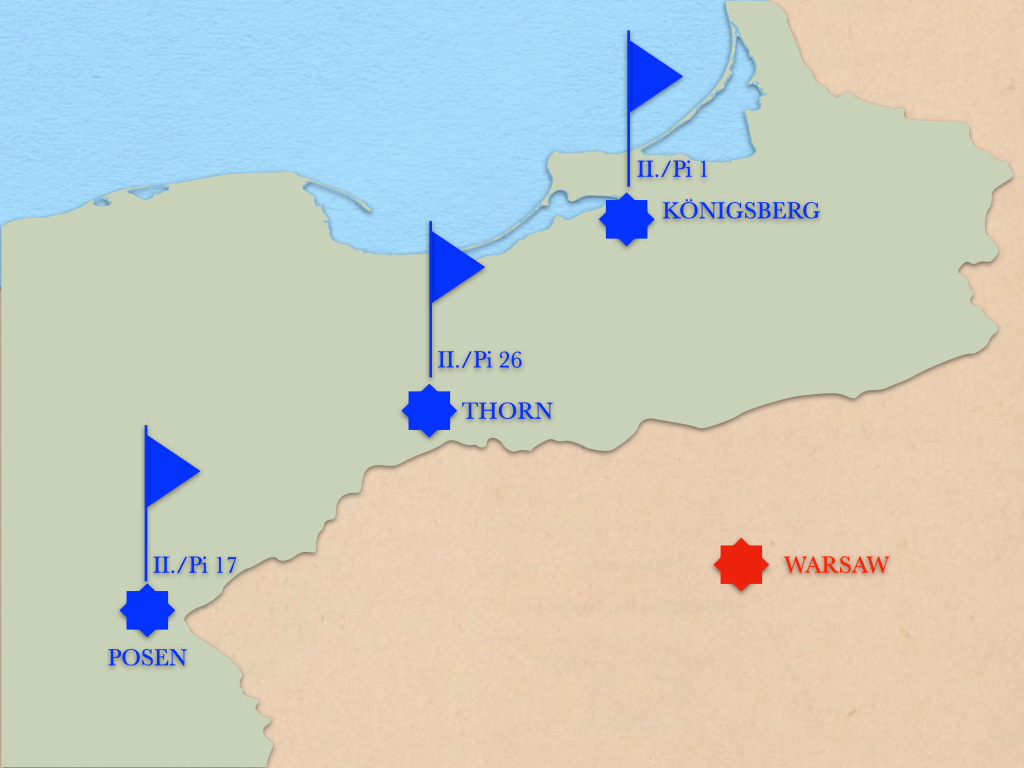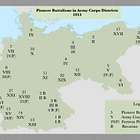Field Pioneer Companies Assigned to Fortresses in the East
Pioneer Units of the German Armies of the First World War
Welcome to the Tactical Notebook, where you will find more than five hundred tales of armies that are, armies that were, and armies that might have been. If you like what you see, please share the Tactical Notebook with your friends. If, however, you find our content to be irritating, supercilious, or just plain wrong, please share the Tactical Notebook with your enemies.
In the summer of 1914, the movements of armies in the field were such that little fighting took place in the vicinity of the great fortresses of the German Empire. Thus, the seven field pioneer battalions assigned to such complexes at the start of the war found themselves with little to do. Within days, the arrival of pioneer companies composed of older reservists, whether of the Landwehr and the Landsturm, underscored the absurdity of the assignment of such units, all of which were composed of young men with recent training, to places far from the thunder of the guns.
On the Eastern Front, where the defenders of the most Prussian of Prussian provinces faced the cream of the Russian Army, the field battalions assigned to the great fortress complexes of Königsberg, Thorn, and Posen gave their pioneer companies to improvised field formations. Assembled in haste from whatever Landwehr, Landsturm, and Ersatz units happened to be at hand, these temporary infantry divisions often bore the names of their commanders. Thus, of the three companies of the Second Field Battalion of the 1st Pioneer Battalion [II./Pionier Bataillon 1], the 4th Field Company found itself serving with Division Brodrück, the 1st Reserve Company with Division Göltz, and the 2nd Reserve Company with Division Bredow.
After the German victory at Tannenberg (23-30 August 1914), the Prussian War Ministry began to impose a degree of regularity on the mulligan stew of formations assembled during the crisis. In the course of this process of rationalization, some of the pioneer companies that had been initially assigned to fortresses on the Eastern Front found new homes. Many, however, remained with the formations with which they had served during the Tannenberg campaign.
For Further Reading:
Sources:
Adolf Günther Erinnerungsblätter an die Teilnahme des Pionier Bataillons Fürst Radizwill (Ostpreußisches) Nr. 1 am Weltkriege 1914-1918 [Remembrance Book of the Participation of the Pioneer Battalion Prince Radizwill (East Prussian) Number 1](Oldenburg: Gerhard Stalling, 1922) pages 60-94
Reichsarchiv Die Befreiung Ostpreußens [The Liberation of East Prussia] (Berlin: E.S. Mittler, 1925) pages 361-362
Paul Heinrici, Das Ehrenbuch der Deutschen Pioniere [The Honor Book of the German Pioneers] (Berlin: Wihelm Kolk, 1931) page 133
Note on Sources: The regrettable brevity of this article stems, to a large degree, from the laconic character of the regimental history of Pioneer Battalion 1 and the complete absence of regimental histories for Pioneer Battalions 17 and 26. (The peacetime garrisons of the two latter units, the cities of Thorn and Graudenz, were incorporated into Poland in 1919. This great change, and the movement of people that followed, prevented the formation of the sort of veterans’ associations that, in other places, assisted with the writing, financing, and marketing of regimental histories.)







